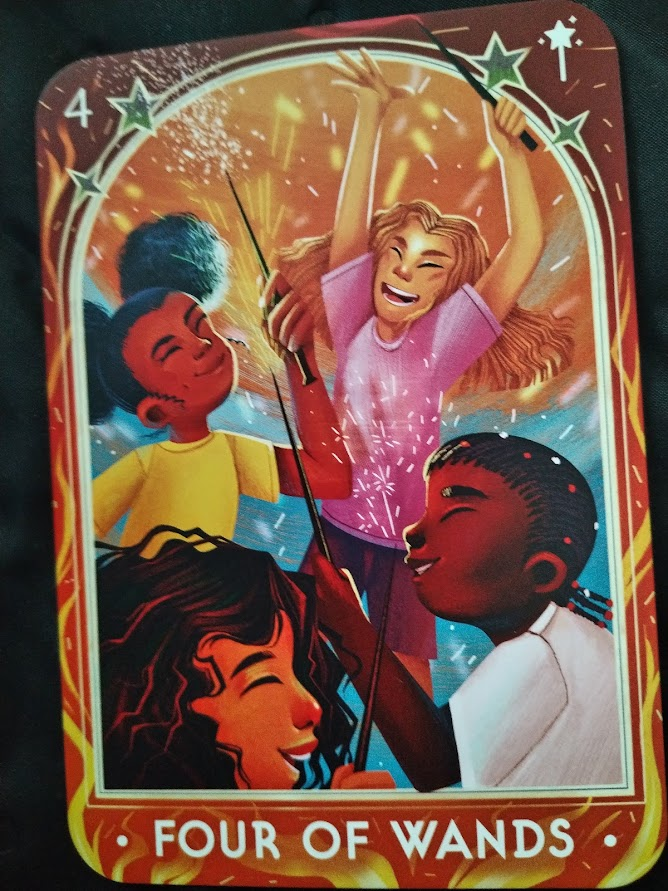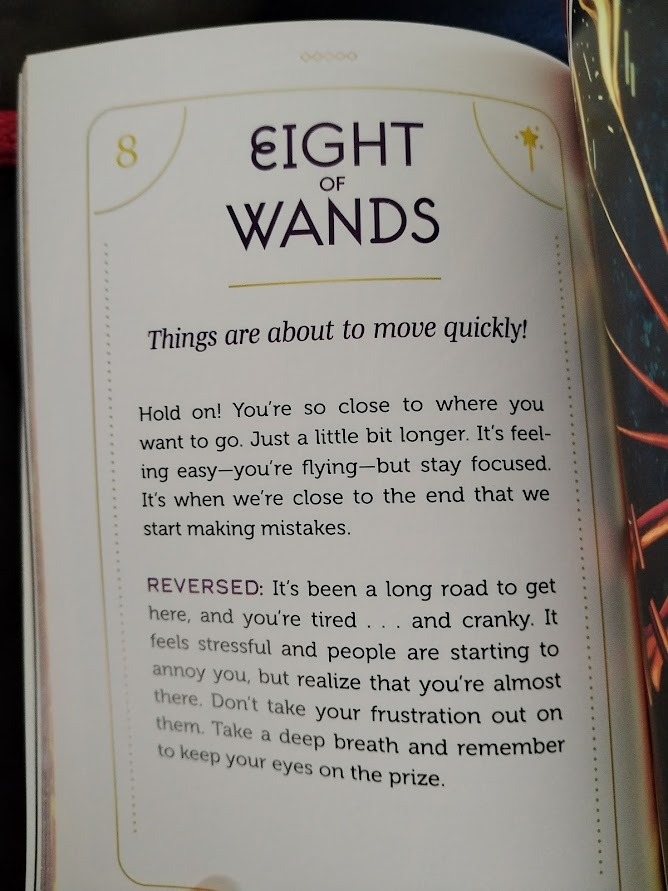The Kids’ Tarot is a fun, interactive tool to help kids engage with some of life’s biggest questions—thoughtfully, creatively, and playfully.
This gorgeous deck helps kids explore and reveal who they are while helping them understand the world and those around them. By bringing attention to their thoughts (swords), emotions (cups), intentions (wands), and actions (coins), kids expand their self-awareness, confidence, and connection to others.
Written by author of the bestselling Fountain Tarot Deck and child psychologist Jason Gruhl, The Kids’ Tarot introduces kids to powerful characters like The Magician (imagination and will power), The Hermit (quiet observation and focus), and Strength (courage and determination)—giving them ways of naming the many different parts of themselves. Friends can ask each other questions by using the cards to spark rich conversations. Parents can use them for exploring new ways of thinking about something after a hard day at school. Or they are perfect for using on your own when looking for guidance.
This beautiful deck is a touchstone that begins to put kids in the driver’s seat of their own lives—uncovering hidden gifts, truths, and possibilities.
This is a first for me! I previously reviewed this deck in ebook form, but now I have it in physical form so I'm starting over. You can see the unboxing video on tiktok or youtube and the flickthrough on tiktok or youtube, and I tried out two spreads, an interview spread and a month ahead spread.
I. First Impressions
III. The Guidebook
IV. In Use
Recommendation
Bonus
The deck comes in a box a little smaller, but much fatter, than a standard paperback book. It opens with a magnetic flap on the right hand side, with a little saying inscribed just under it: The answers are inside you...
The book sits on top of the cards, which are in a well with a ribbon to help get them out. The whole package feels very sturdy and would stand up to being thrown in a bag or carried about - which, given it's aimed at children, is a good thing!
The cards themselves are bright and cheerful, with some of the traditionally 'scary' cards adapted to be more child-friendly, and some of the Major names altered.
Major Arcana:
The Major Arcana has Justice at 8 and Strength at 11. Images are presented in a frame, with the title in a cute 'handwritten' font at the bottom, the number in Arabic in the top left corner and 'Major Arcana' printed in the top right. They're generally RWS based, the system that most tarot decks use, though some stray quite far from their origins.
Some of the names have been altered to make them more child-friendly or easy to understand. We have The Priestess instead of The High Priestess, Wisdom instead of The Hierophant - a word I've never heard used outside of tarot! - Love instead of The Lovers, The Wheel instead of The Wheel of Fortune, The Upside Down instead of The Hanged Man, Possibility instead of Temperance, The Trickster instead of The Devil, and Forgiveness instead of Judgement. There's no mention in the book that these are altered titles, which doesn't matter if this is your first deck but might lead to confusion with your second!
The Minors are fully illustrated in lovely, bright colours and a slightly cartoony style. Minors are colour co-ordinated, with the frames on the Wands a fiery red, Swords in airy blue, Cups a watery green and Pentacles earthy red. It's a gorgeously inclusive deck, with characters of all shapes and colours - there's no one visibly handicapped, but there are people of every age and from various cultures, which is lovely to see.
Card Stock and Size
The cards are just a little larger than standard tarot size, at 3 inches by 5, which makes them easier for children to handle. They're a nice matt finish and feel quite sturdy, though they might not stand up to very rough handling. They shuffle really nicely without catching or stuttering at all.
III. The Guidebook
Writing Style and Readability
As the deck is aimed at children, the book is written in a very gentle, easy style, without any complicated mystical sections. The deck is presented as a way for children to better understand themselves and other people.
Card Meanings
Each card gets a full page image, and a page of meanings, both upright and reversed. They're written very simply and in a forthright manner, and the reversals are generally blocks rather than being anything negative. Court cards are described as people.
Spreads and Techniques
The book includes a few simple spreads - the most complicated has five cards - and an assurance that whatever way you chose to use the deck is absolutely the right way to do it, which is great for kids.
IV. In Use
Intuition and Connection
As it's mostly RWS based, I was able to start using this deck straight away, but I did look at the book each time to see how Jason had described each card. His meanings are clear and simple and relate really well to the images; it's clear that he and Kristina worked hard together to make sure everything meshed. Kids might need to talk a bit about the images to describe the meaning, but I think they're clear enough once you get your eye in.
Clarity of Readings
I did a variety or readings with these; daily draws as well as more complicated readings. Once or twice I had to pause and think about the cards, but there was always an angle that let them make sense. My Querants liked the images, but said that there were none of the 'oh that's what that's about!' moments they get with some decks; the readings made sense but weren't as deeply insightful as some. For children this will work well, as they'll need to get used to tarot before delving more deeply.
Suitability for Different Skill Levels
This deck is specifically designed for beginners, and it does very well at that, but more advanced readers can learn from it as well. I've certainly found myself looking at cards in ways I haven't before. And apart from anything else, the cards are so gorgeous! This is one of the decks I'd love to frame and put on display.
Strengths
- The images are friendly and bright
- The meanings in the book are clear and easy to understand, giving a good foundation for further study
- The cards are a good size and feel sturdy
Weaknesses
- Some images stray a little from the RWS, but for newcomers that won't matter
- Altered titles on Major Arcana might lead to confusion later on
- Although the characters are a great mix of sizes, colours and cultures, there's no one visibly handicapped, which feels like a missed opportunity
Recommendation
The deck is aimed at children. I recommend it for anyone looking to expand their practise as well. There's a lot to learn from these cards.
Bonus
This deck offers countless possibilities for kids. Whether it’s a tool for emotional expression – imagine a child pulling the 3 of Swords to represent sadness or the 10 of Wands for feeling overwhelmed – a spark for creativity, or simply a fun way to learn, it's a valuable resource. Parents will also appreciate the deck's ability to foster open dialogue and reduce anxiety about tarot. The Kids' Tarot is a touchstone that empowers children, helping them uncover hidden gifts, truths, and possibilities, making it an excellent addition to any collection.













No comments:
Post a Comment